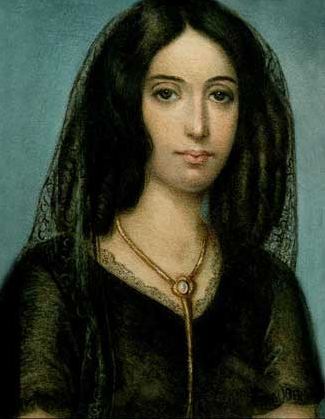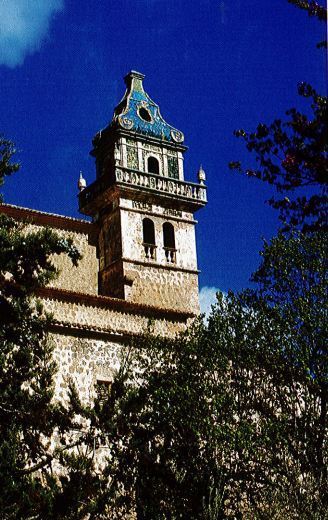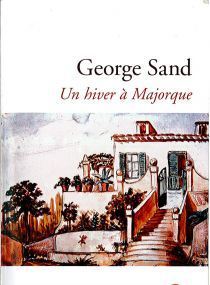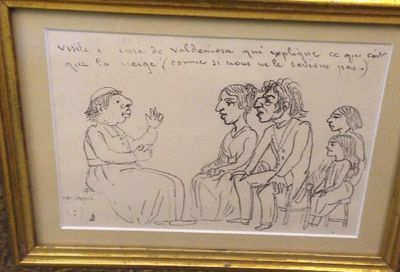George Sand (and Chopin) in Majorca
By ADRIAN TAHOURDIN
George Sand spent four months in the winter of 1838–9 in Majorca, together with her two children Maurice and Solange and her lover Frédéric Chopin, some six years her junior. The experience gave rise to Un Hiver à Majorque (1842, A Winter in Mallorca).
The book caused considerable offence to the islanders on account of its less than flattering depictions: “Travellers usually write about the good fortune of the southern races . . . . I have abandoned the idea since my visit to Mallorca. There is nothing as sad or as pathetic in the world as this peasant who knows nothing but praying, singing and working, and who never thinks . . . . If vanity did not wake him from his stupor from time to time and set him dancing, his feast days would be devoted to sleep” (in Shirley Kerby James’s translation – apparently that longtime Majorca resident Robert Graves also produced a translation of the text in the 1950s, although he noted “the bitterness” that the sojourn had “left in [Sand’s] heart”).
Later she writes, “When one wonders how a rich Mallorcan can spend his money in a country with no luxuries or any kind of temptation, it can be explained by looking into their houses at the grubby idlers of both sexes, who occupy a part of the house reserved for them . . .”. And again: “The men don’t read, the women don’t even sew. The only sign of domestic activity is the smell of garlic that betrays the act of cooking, and the only sign of private amusement are cigar butts squashed on the paving”.
The group ended up staying in the Carthusian monastery of Valldemossa (“la poésie de cette chartreuse m’avait tourné la tête”), about 20 km north of the capital Palma, where they had disembarked (from Barcelona). Sand was impressed by the architecture of the villas in Palma and, of course, by its Gothic cathedral. She goes into some detail about the bureaucratic challenges presented by, and the costs involved in the need to transport Chopin’s Pleyel upright piano across rough terrain to Valldemossa (it is now on display in the monastery). While there, Chopin revised his 24 Preludes.
Valldemossa (above) made an impression: “When the sight of mud and fog in Paris makes me miserable, I close my eyes and see again, as if in a dream, that green mountain, those fawn coloured rocks, and that solitary palm tree lost in a pink sky.” So struck was she by the beauty of the scenery that she longed to bring her friend Eugène Delacroix to the island.
These were interesting times for the Balearics, with Carlist wars on the Spanish mainland producing a trickle of refugees to the islands. Sand notes all this, provides a short history lesson – the horrors of the Inquisition and persecution of Jews and Muslims/Moors in particular – and describes the reforms being undertaken by the Liberals, taking effect even on Majorca.
I put Chopin’s name in parentheses in the heading to this post as he barely features in Sand’s narrative, except as “notre malade”, “our invalid”: “All these fiery and heady wines disagreed with our invalid, and even with us . . .”. Her spirited children, indeed, are more prominent in the text. Chopin's absence is left unexplained, but maybe it was out of respect for a convalescent. In any case, it’s unlikely that Sand would have been struck by a bout of pudeur – that would not have been her style. Although, as Béatrice Didier, editor of the Livre de Poche edition of Un Hiver à Majorque (cover, above), points out, the cramped, shared sleeping arrangements in the monastery would hardly have been conducive to intimacy.
For all her complaints and criticisms, Sand appears to have developed a grudging respect for the locals as they struggled against harsh conditions. After all, she did write affectionately and knowledgeably about the peasantry of the Berry in her fiction, and was politically on the side of progress and reform. But her sharp tongue is never entirely absent here, as in her response to the local priest, captured in this drawing she made of his visit to her “family”:
The words read: “Visite du curé de Valdemosa qui explique ce que c’est que la neige (comme si nous le savions pas.)” – “priest’s visit during which he explains what snow is (as if we didn’t know.)"
Peter Stothard's Blog
- Peter Stothard's profile
- 30 followers







